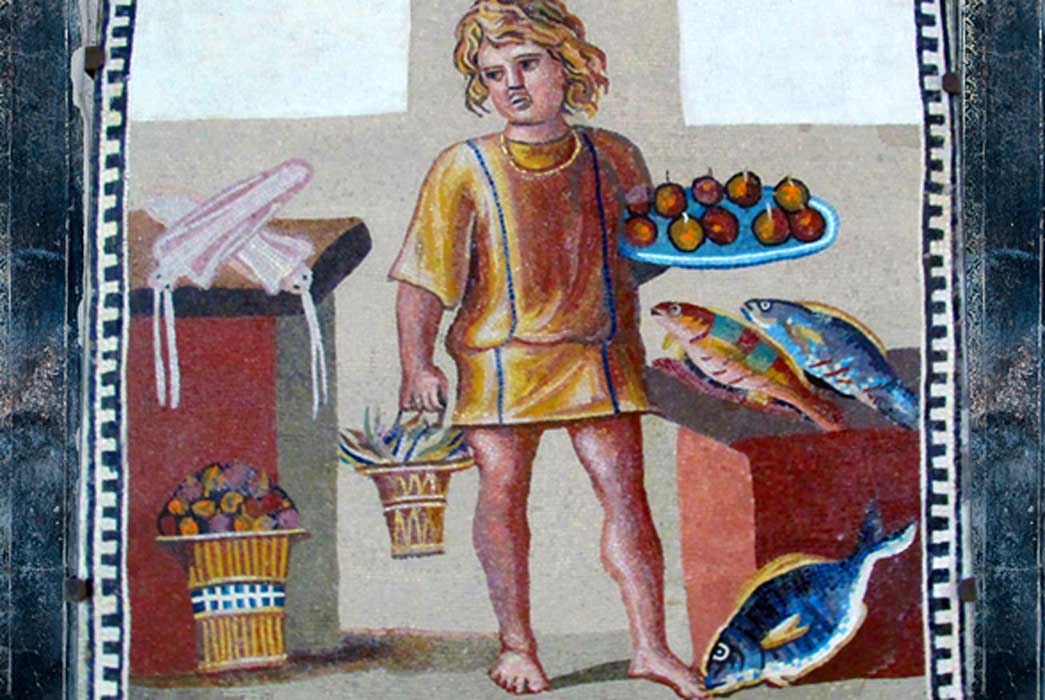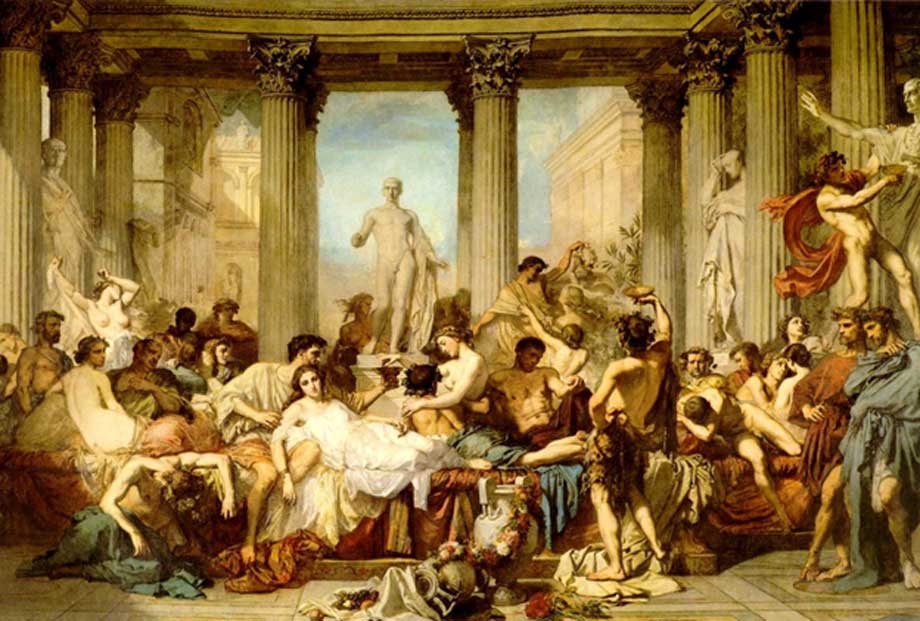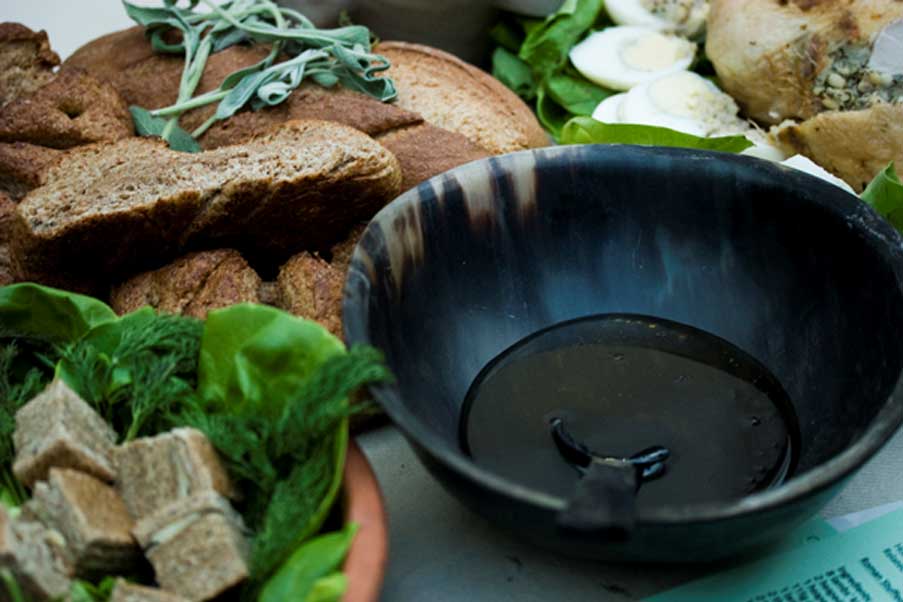
Eating Like a Roman: Healthy Greens, Gritty Bread and Fish Paste – The Evolution of Ancient Roman Cuisine
While the reputation of ancient Roman dining features decadent drinking and feasting to a point of excess – leading to notorious purges in the vomitorium – those stories were largely anecdotal, or were given as moral messages, and warnings of wasted luxury. The reality of ancient Roman cuisine was very different – and in many ways surprising!

‘The Romans of the Decadence’ (1847) by Thomas Couture. (Public Domain)
Roman cuisine during the Kingdom (753 BCE – 509 BCE) was similar to ancient Greek fare. It was rather simple and the variety of food was limited. Romans of this period typically ate a porridge (called the puls) made of emmer, salt, olive oil and various herbs. They also ate vegetables, fruits, meat, fish and seafood and used olive oil, salt, pepper and various spices in their food.
Meals consisted of the jentaculum (breakfast), the cena (lunch) and the vesperna (dinner). Breakfast was light and usually consisted of a piece of bread with honey or cheese. Lunch was a large meal and the main meal of the day, while dinner consisted of a light supper.

Olive Oil, bread and herbs. Roman food at the British Museum (CC BY 2.0)
During the Republic and Empire, as Rome expanded and became more prosperous, food became more diverse. Romans became acquainted with the foods and cooking methods of the provinces. The cena became larger and moved to the afternoon (at around 2 to 3 p.m.) as more foods became available, while the vesperna (the light supper) disappeared altogether. What used to be lunch was replaced by the prandium, the equivalent of a light lunch.
The cena, which initially consisted of only one course, developed into two courses during the Republic: a main course and a dessert served with fruit or seafood. By the end of the Republic, it evolved into a three-course meal: the appetizer (gustatio), the main course (primae mensae) and the dessert (secundae mensae).
Sit, Stand, or Lay Down: Eating Habits Revealed Social Class
There were many differences between the eating habits of the lower and the upper classes and these differences became larger during the Republic and the Empire. For example, regular Romans could not afford to eat meat and expensive exotic foods from the provinces. They often ate the porridge made of emmer, salt, fat and water (the puls) with bread sprayed with a little bit of salt. Richer Romans ate the same porridge but added chopped vegetables, meat, cheese and various herbs to it.




